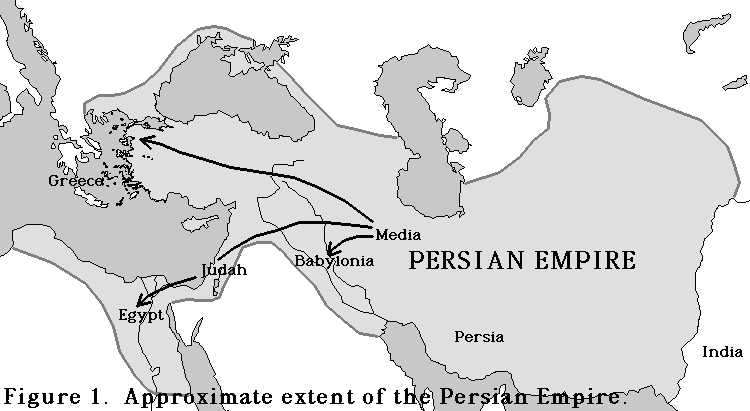
The Actual History.
When I teach a course in Revelation, I never start in that book. I start in Daniel and 1 Maccabees, a history book in the Apocrypha. That is because there was a language style developed for times of persecution. We need to know the special code of that language first. Otherwise the images will seem weird to us and we will miss understanding the passages. Once one learns the language style, Revelation appears as a book full of hope and consolation for true Christians, especially to those being persecuted for their faith.
The normal Old Testament history of the Bible ends with the rebuilding of the Temple and walls of Jerusalem under Ezra and Nehemiah. It ends in about 440 B.C. during Persian rule. There is then a big gap until John the Baptist and Jesus appear on the scene. At that time the Romans are in control but the main language is Greek, not Hebrew or Aramaic. Some Bibles contain a collection of books called the "Apocrypha". These were written in Greek and were rejected by the Hebrew scholars and priests who were assembling the Old Testament. They appear in the Catholic Bibles but not most Protestant Bibles. Two of the history books in the Apocrypha are 1 and 2 Maccabees, and they are useful and good reading. They fill us in on the important history between the Old and New Testaments. The other books can be interesting reading.
Table 1. Bible contents:
Bible version - Old Testament - Apocrypha - New Testament
Hebrew - - - - - - - - -YES - - - - - - - NO - - - - - - - NO
Catholic - - - - - - - - YES - - - - - - -YES - - - - - - -YES
Protestant - - - - - - - YES - - - - - - - NO - - - - - - -YES
Table 2. Apocrypha contents:
1 Ezdras (Ezra)
2 Ezdras ...the only one in apocalyptic style
Tobit
Judith (killed the enemy general)
(additions to) Esther
Wisdom of Solomon (like Proverbs)
Ecclesiasticus (more wisdom literature)
Baruch (scribe who worked for Jeremiah)
A Letter of Jeremiah
(additions to Daniel): Song of the three (Shadrach, Meshach, Abednego);
Daniel and Susanna; Daniel, Bell, and the Dragon
Prayer of Mannaseh (the bad king after his father Hezekiah)
1, 2 Maccabees (important history)
(some versions also have): 3, 4 Maccabees; Odes; Psalms of Solomon
READ Daniel 8.
We start with Daniel chapter 8. There we read about a vision given to Daniel. It was like a dream, but Daniel was awake. (Now you get to write down some answers.)
What is the animal described in verses 3-4?
How many horns?
What is the animal described in verses 5-8?
How many horns according to verse 5?
How many horns according to the end of verse 8?
What is the name of the angel sent to tell Daniel the meaning of the vision (verse 16)?
The events in this vision seem weird to us, about a ram and a goat and their horns. The angel Gabriel (one of the highest) was sent to Daniel to interpret the vision. He said that the animals represent kingdoms of the future, and the horns represent their kings. The vision was really about future events that would happen within the next 500 years after Daniel's time.

The Actual History.
These events really did happen. The map (Figure 1) shows the areas of activity of the Babylonian Empire (Daniel's time) which was about to be conquered by the Empire of the Persians and Medes (ram of two horns). It was during the Persian Empire times that coins were invented in what is now western Turkey. They were simple at first, having a design only on one side (Figure 2).
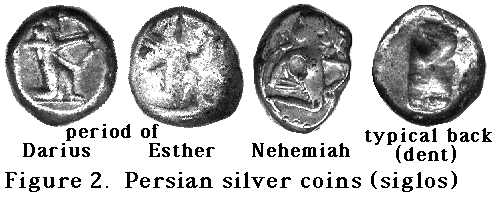
That empire was benevolent (good) to its conquered peoples, letting them go back to their native homelands. They even helped the Jews rebuild their temple and the city walls of Jerusalem (see Ezra and Nehemiah). After a beauty contest, Esther (an orphan Jewess) was made the new queen. In that position she saved her Jewish people from an intended holocaust. That event is celebrated today in the Jewish feast of Purim. (The Book of Esther is good and easy reading in both its normal version in the Bible and extended version in the Apocrypha.)

The Persians were eventually conquered by Alexander the Great, king of Macedonia and Greece (goat with a large horn). The coins of Alexander (Figure 3) often have his picture on one side and name on the other. The year 333 B.C. is an approximate date for his reign (336-323). He introduced Greek (pagan) culture to the conquered people. The Greek language became the common trade language for the region, much like English is for the world today.
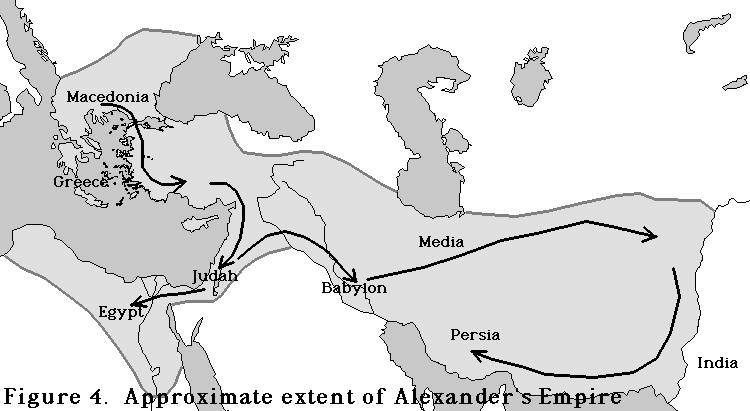
Alexander's teacher had been an important man named Aristotle. Aristotle and Alexander believed that people were the most important beings around and that men could figure out how the world operated by using their own reason. Men could then change their world to suit themselves, to rule it, and to mold their own future. (Sound familiar?) They believed this so strongly that they felt everyone should believe it also. So besides conquering all of the world that he could (Figure 4 map), Alexander set up libraries, schools, and gymnasiums where men could become great. But Alexander did not live very long. He died at about the age of 30 from some disease. Maybe the world's greatest general (he knew the personal names of every one of his soldiers down to the least of them) was killed by a mosquito. Alexander was amazed when he was shown the 200-year old Daniel 8 prophesy of his life!
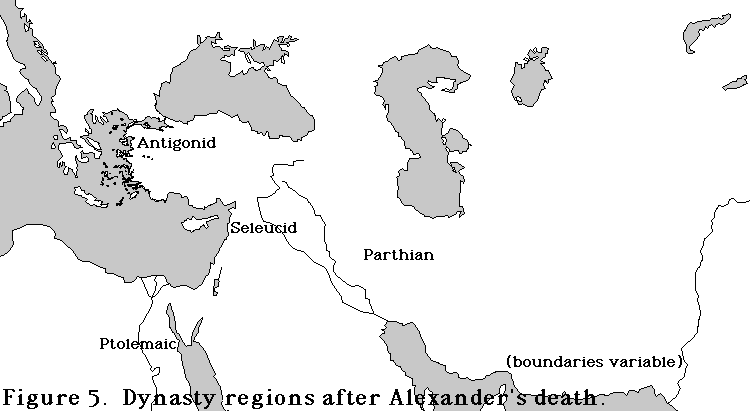
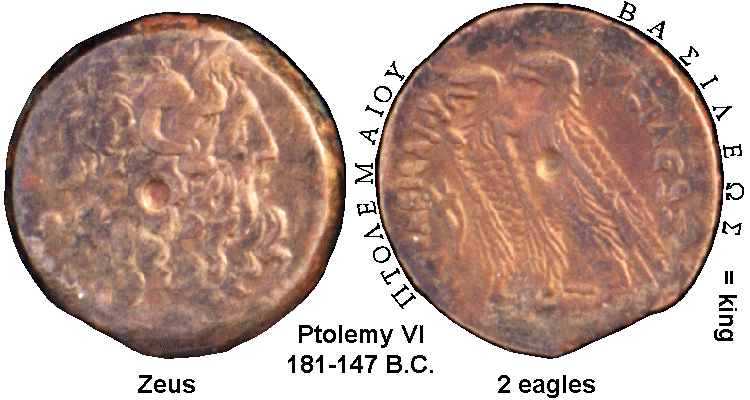 Figure 6, coin of Ptolemy VI
Figure 6, coin of Ptolemy VI
The empire (map, Figure 5) was divided between his four generals (lesser horns). One ruled Greece and Macedon and started the Antigonid dynasty. A general named Ptolemy started a series of kings in Egypt, all with the same name until the Romans took over shortly before the time of Jesus Christ. Their coins (Figure 6) typically have a picture of Ptolemy I (or Zeus, a Greek god) on them, regardless of who was reigning, and an eagle or two on the back.
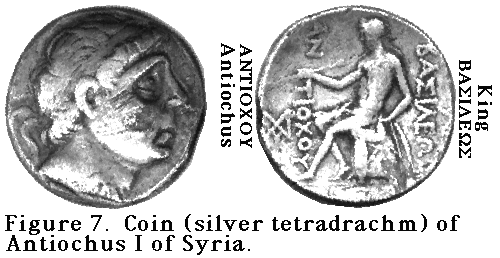

Another general started the Selucid dynasty, in which the name Antiochus was frequent (Figure 7). The cities of Antioch derive their names from those kings. The Parthians ruled the eastern part of Alexander's empire, based where the Kurds want to re-establish a new nation today. Their coins are unusual in having the lettering on the back side arranged in a square. (Figure 8)
These generals and their successors continued to try to get people to believe in the greatness of man. They did well, because these ideas predominate in the world today. This is what is taught in public schools.
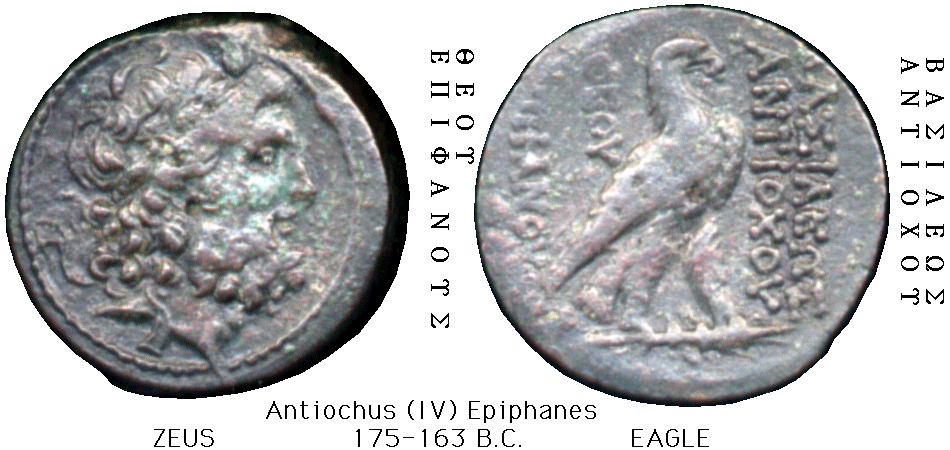 Figure 9, a coin of Antiochus IV Epiphanes
Figure 9, a coin of Antiochus IV Epiphanes
Eventually in 175 B.C. there came a king in the Selucid dynasty named Antiochus IV Epiphanes, (little horn becoming great) who thought that he was God. He even said so on some of his coins on which the Greek words mean "King Antiochus--the appearance of God", or "--God made visible". (Figure 9) He decided to show how great he was by enlarging his share of Alexander's former empire. He defeated Ptolemy VI in Egypt and also tried to expand eastward against the Parthians. He tried to make all of his subjects give up their own religions, which he considered only superstitions, and give glory to man instead. The Greek gods were to be worshipped instead as a token of loyalty to the ideas of the king. Everyone, even the king, knew that the Greek gods did not really exist; they had become symbolic only. It would be like us worshipping Uncle Sam.
Antiochus tried to enforce this attitude on the Jews, forbidding them to worship the true God of the Bible. He boldly entered the Jerusalem temple where only the high priest could enter once per year. He sacrificed a pig on the altar, spoiling it for holy purposes. Then he set up a statue of the Greek god Zeus in the temple and told the people to worship Zeus. Some Jews, fearing for their lives, agreed to do what Antiochus commanded. Some of the faithful resisted. Eventually in about 166 B.C. one priest, Mattathias, got so angry at being forced to worship false gods that he killed the soldiers making him do it. That forced the family to go into hiding. Others joined them in a small army of freedom fighters. One of the leaders, after Mattathias died, was his son Judas Maccabeus, after whom the Apocrypha Books of Maccabees are named. In about three years they beat the major armies of Antiochus and won freedom for the Jews, for the first time since the Babylonian captivity. They purified the Temple in Jerusalem, resulting in the Jewish celebration of Hanukkah (near Christmas time).
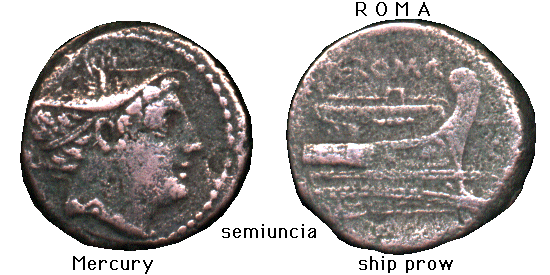 Figure 10. a coin of Rome
Figure 10. a coin of Rome
The freedom of the Jews did not last long. The office of High Priest became a political one and there were disputes between the leaders. Eventually the Romans were invited to settle things, and they did so gladly. They were taking over the entire Mediterranean Sea perimeter, and this tiny territory of the Jews was just another piece in their empire. The Roman coins (Figure 10) often have on them the name ROMA, their capital city. The Greeks had unified the culture and the commerce in the region. The Romans brought general peace and stability. It was during early Roman empire times that God dropped into our history for a visit as the person Jesus Christ, born to Mary at Bethlehem in Judea.
Time to write your answers again:
What kingdom did the ram represent (Daniel 8:20)?
What kingdom did the goat represent (Daniel 8:21)?
Who is the single horn (Daniel 8:21 but not named there)?
Why did the four horns replace the single horn (verse 22)?
Who is the wicked king (verses 23-25 but not named there)?>br>
What is the "Beautiful Land" (verse 9)?
What Jewish feast (near Christmas time) today celebrates the end of the "2300 evenings and mornings" and the reconsecration of the Temple sanctuary?
"Hidden"
That is how the history actually worked out. We can see that the strange vision of Daniel was talking about real history in the future. But the language style that was used is called "apocryphal" (adjective) or "apocalypse" (noun), with the root meaning "hidden". The same root is in the word "Apocrypha" referring to the books normally in the Catholic Bible but not in the Protestant Bible. This language style, with images like the strange animals and their horns, was introduced at a time when the Jews were under oppression of a foreign government, that of Babylon. It came back into use during the oppression of Antiochus Epiphanes. When John wrote the Book of Revelation the Christians were under severe persecution from the Roman Emperor Domitian. The Holy Spirit directed him to use the same apocalyptic literature style.
End Times
Another thing that we noticed in the Daniel passage was the phrase "a time, times and half a time", (Daniel 12:7) which is interpreted as three and a half years. That is the period of time that God's people would suffer under severe persecution. It is similar to the 2300 evenings and mornings (1150 days) of Daniel 8:14. It is similar to the time that the Temple altar was spoiled under Antiochus Epiphanes. So in Jewish literature the three and a half years came to represent any period of severe persecution, even if its duration was somewhat different. The period without proper sacrifices was called "desolation" in Daniel 8:13, and again refers to what Antiochus Epiphanes did hundreds of years later. When Jesus was asked about end times, he also gave a warning about a new "abomination that causes desolation" (Matt. 24:15), referring to Daniel, talking about what happened under the Romans in 70 A.D., and also what will happen in the very Last Days, which are still in our future. There are many other parallels that can be enjoyed with further study.
Table 3. Daniel 8 summary:
Vision details in - - - - - - - - - - - Is symbolic of
Daniel 8:1-14 - - - - - - - - - - - - -Daniel 8:15-27
2-horned ram - - - - - - - - - - - - - King(dom) of Medes and Persians
Goat - - - - - - - - - - - - - - - - - - - King(dom) of Greeks
- large horn - - - - - - - - - - - - - - -"First" king (Alexander)
- 4 horns - - - - - - - - - - - - - - - - -Fragments of kingdom
- little horn - - - - - - - - - - - - - - -Wicked king (Antiochus Epiphanes IV)
Prince of the host - - - - - - - - - - -Prince of Princes (God)
2300 evenings and mornings - - -"is true" (about 3 1/2 years)
Back, Next
Background,
Introduction, Lesson
1,
2,
3,
4,
5,
6,
7,
8,
9,
10,
11